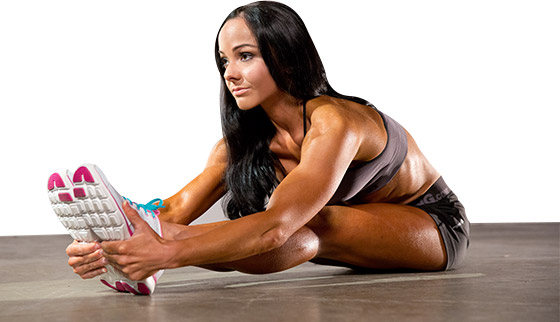A warm up, stretching and cool down are three (3) vital aspects of physical preparation for sport. They help prevent injury and look after the wellbeing of the athlete.
Warm up
A warm up should prepare the body for the physical activity ahead. Whether it is a sport, general exercise or training, a warm up is important for safe participation.
A warm up should begin with general whole body movements that are low in intensity and slowly increase this intensity to what will be required during performance. This means, if the athlete will need to do a 100% flat out sprint, they should slowly progress to this intensity in the warm up: from a light jog, to running, to sprinting.
A warm up should also begin without any equipment. If the athlete is participating in a sport such as football, then the football should not be added into the warm up until towards the end, when the body already has blood flowing to the working muscles. The warm up should include activities with the football in order to properly prepare the athlete for the sport. Having them pass, tackle, and complete skills while running, is an important aspect of the warm up, because it should be as specific to the sport or activity as possible.
Warm ups will often finish with a small mini game to fully replicate the movements required in the sport. This helps ensure the body has slowly responded to the activities demands and is ready to perform. Performing without a proper warm up (minimum of 5-7 minutes) increases the risk of injury to the athlete.
Stretching
Stretching is a fundamental part of physical preparation for sport. Stretching as part of a training program increases the athletes flexibility, which helps to prevent injury and promote wellbeing. However, these comments are related to a flexibility program, where stretching is done routinely just like resistance training.
Warm up and stretching
Should stretching be part of a warm up in preparation for physical activity or sports performance? The answer has been highly debated over the last decade and the conclusion is basically that stretching in a warm up should be specific to the sport.
There are many different types of stretching: ballistic, static, dynamic, and PNF. Stretching in a warm up should use the correct type of stretching for the sport. If the sport requires continual movement throughout the activity, such as in football, netball, tennis etc then dynamic stretching is the more appropriate form.
However, if your sport is gymnastics or dance and you are required to hold a pose such as the splits, then static stretching is preferred. This is not to say that the types of stretching cannot be combined, as dance and gymnastics also frequently require movement throughout the range of motion and dynamic stretching does help performance.
The reason stretching should be specific to the sport, is because static stretching has been shown to decrease power and force output from the muscle, and can decrease performance in sports that require them.
For more information on warm up and stretching read this article.
Stretching and cool down
Stretching should always be used as part of the cool down. During the cool down, a combination of stretching types may prove beneficial. It may help speed up recovery and decrease DOMS. Ballistic stretching is the exception and should not generally be used in a cool down.
Cool down
A cool down should slowly bring the athlete back to a pre exercise metabolic state. The cool down should begin at a vigorous intensity and slowly decrease in intensity. The aim is to continue to move the blood back to the heart as the heart decreases in rate back to a pre exercise level.
This helps ensure that waste products are removed before exercise is stopped. Resulting in less carbon-dioxide and lactic acid in the muscles. It also helps to reduce the muscle temperature and deliver nutrients required for repair.

